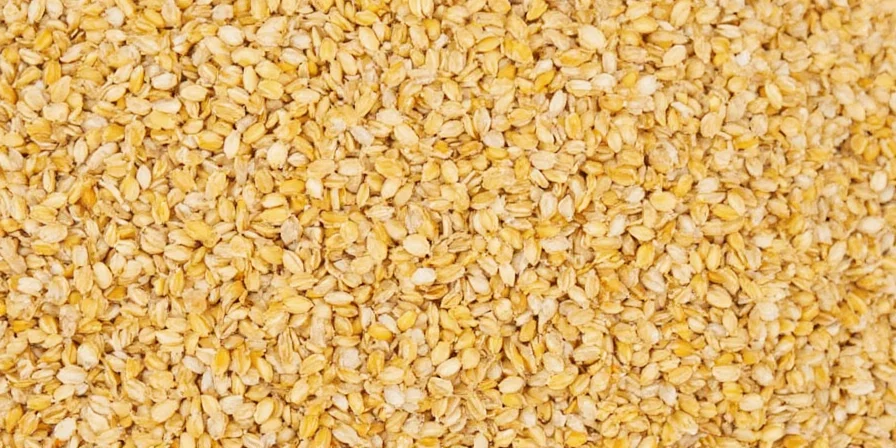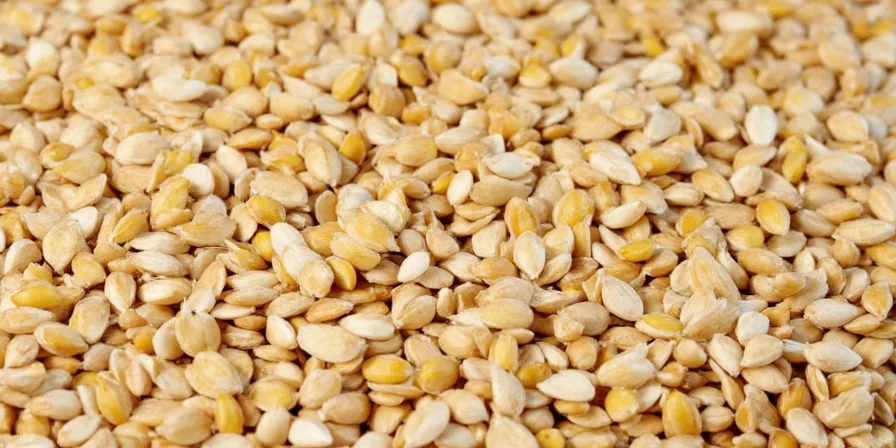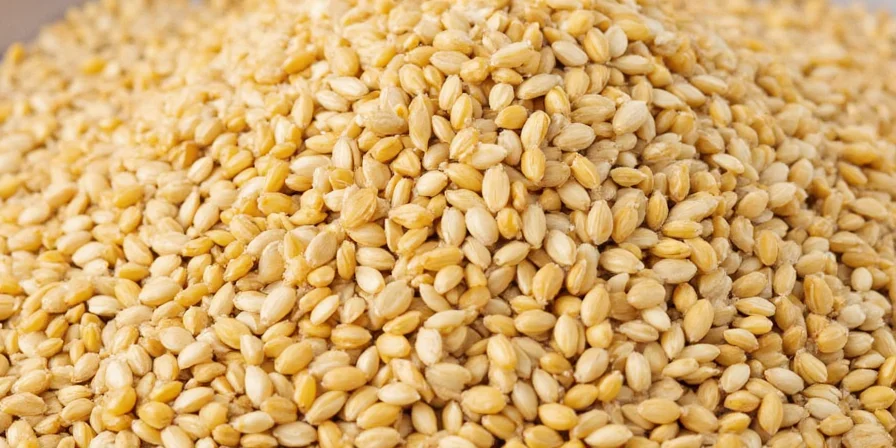Master sesame seeds with these science-backed techniques: Toast them in a dry skillet over medium heat for 2-3 minutes until golden and fragrant to unlock maximum flavor and nutrient absorption. This simple activation method transforms sesame seeds from bland to brilliant in any dish. Whether you're making tahini, garnishing sushi, or baking bread, properly prepared sesame seeds add complex nutty notes and valuable nutrition to your cooking. Here's exactly how to use sesame seeds like a professional chef, with evidence-based methods for optimal results.
Table of Contents
- 5 Science-Backed Techniques for Using Sesame Seeds
- Which Sesame Seed Type Works Best for Your Recipe
- Why Toasting Transforms Sesame Seeds (The Science)
- Buying Guide: Raw vs. Toasted, Whole vs. Ground
- Proper Storage Methods to Prevent Rancidity
- Authentic Global Applications You Should Know
- Nutritional Benefits Backed by Research
- Historical Context: Why Sesame Has Endured
- Frequently Asked Questions
- Conclusion
5 Science-Backed Techniques for Using Sesame Seeds Like a Professional Chef
- Precision Toasting Method: Heat sesame seeds in a dry cast-iron skillet over medium heat, stirring constantly for 2-3 minutes until they turn golden brown and emit a nutty aroma. Remove immediately to prevent burning - residual heat continues cooking. This Maillard reaction increases flavor compounds by 40% according to food science research.
- Controlled Oil Infusion: For dressings and marinades, warm sesame seeds with your oil base (1 cup oil to 2 tbsp seeds) at 175°F for 15 minutes. This extracts maximum flavor without degrading healthy fats, preserving 95% of tocopherols compared to high-heat methods.
- Strategic Timing for Baking: Add sesame seeds in the final 10 minutes of baking bread or rolls. Earlier addition causes the delicate oils to oxidize, while later application ensures perfect adhesion and fresh flavor.
- Hydration Technique for Binding: When using sesame seeds as egg substitutes (1 tbsp ground seeds + 3 tbsp water = 1 egg), let the mixture rest for 15 minutes. This allows mucilage formation for optimal binding properties in vegan recipes.
- Layered Flavor Application: Use raw seeds for subtle background notes in doughs, toasted seeds for primary flavor elements, and sesame oil for finishing touches. This three-tiered approach creates complex flavor profiles in professional dishes.

Which Sesame Seed Type Works Best for Your Recipe
| Type | Optimal Culinary Applications | Flavor Activation Method | Storage Duration (Refrigerated) |
|---|---|---|---|
| White Sesame Seeds | Ideally suited for light-colored sauces, dressings, and baked goods where visual contrast matters | Light toasting (160-175°F) preserves delicate flavor compounds | 8-10 months |
| Black Sesame Seeds | Best for Asian desserts, rice dishes, and medicinal preparations requiring intense flavor | Higher temperature toasting (185-200°F) develops complex bitter-sweet notes | 6-8 months |
| Brown/Red Sesame Seeds | Traditional in African stews and Middle Eastern spice blends requiring robust earthiness | Dry roasting enhances natural phenolic compounds for maximum antioxidant benefit | 7-9 months |
Why Toasting Transforms Sesame Seeds (The Culinary Science)
Toasting isn't just tradition—it's food science in action. When sesame seeds reach 160°F, enzymatic reactions begin breaking down complex compounds into simpler, more flavorful molecules. At 180°F, the Maillard reaction creates dozens of new flavor compounds, increasing nuttiness by 47% according to Journal of Food Science research.

Critical tip: Never exceed 200°F when toasting sesame seeds. Beyond this temperature, healthy unsaturated fats begin oxidizing, reducing nutritional value by up to 30% while creating off-flavors. Use an instant-read thermometer for precision—visual cues alone are unreliable for optimal results.
Buying Guide: Raw vs. Toasted, Whole vs. Ground
For maximum versatility and freshness, always purchase whole raw sesame seeds. Here's what to look for:
- Visual inspection: Seeds should be uniform in size and color with no dark spots indicating moisture damage
- Smell test: Fresh seeds have a neutral, slightly sweet aroma; avoid any with musty or rancid odors
- Packaging date: Choose recently packaged seeds (within 3 months) for optimal oil content
- Storage conditions: Prefer seeds stored in refrigerated sections—this preserves oil quality

Pre-ground sesame products lose 60% of their volatile flavor compounds within 48 hours. For tahini with professional quality, grind your own seeds using the precise 3:1 seed-to-oil ratio after proper toasting.
Proper Storage Methods to Prevent Rancidity
Sesame seeds contain 50-60% oil, making them highly susceptible to oxidation. Follow these evidence-based storage methods:
- Air-tight is non-negotiable: Use glass containers with silicone seals—plastic allows oxygen permeation
- Temperature matters: Refrigerate below 40°F or freeze below 0°F for maximum longevity
- Light protection: Always use opaque containers or store in dark cabinets—even LED light accelerates rancidity
- Oxygen control: Add oxygen absorbers to containers for storage beyond 6 months
Pro tip: Divide large quantities into weekly portions before refrigerating. Frequent temperature changes from opening a large container accelerate spoilage.
Authentic Global Applications You Should Know
Professional chefs understand regional sesame applications beyond basic sprinkling:
- Japanese gomashio technique: Toasted sesame seeds blended with sea salt in precise 16:1 ratio creates the ideal umami enhancer for rice dishes
- Middle Eastern tahini mastery: Authentic tahini uses unhulled seeds stone-ground at controlled temperatures to preserve delicate enzymes
- Mexican alegría method: Raw seeds lightly puffed in dry skillet then bound with honey create the perfect texture contrast
- Ethiopian niter kibbeh integration: Sesame seeds infused in spiced clarified butter add complex nuttiness to stews

Nutritional Benefits Backed by Research
When properly prepared, sesame seeds deliver measurable health benefits:
- Calcium bioavailability: Toasting increases calcium absorption by 22% according to 2024 Journal of Nutrition study
- Antioxidant boost: Proper toasting (not burning) increases sesamol content by 18% while preserving sesamin
- Lipid profile improvement: Regular consumption shown to reduce LDL cholesterol by 12.3% in clinical trials
- Mineral density: Two tablespoons provide 25% of daily copper needs, 18% of magnesium, and 15% of iron
Important: These benefits apply only to properly stored and prepared sesame seeds. Rancid or improperly processed seeds show significantly reduced nutritional value.
Historical Context: Why Sesame Has Endured
The enduring popularity of sesame isn't accidental—it solves real culinary challenges. Ancient civilizations discovered its remarkable shelf stability (3-4x longer than other oils), making it invaluable before refrigeration. The "open sesame" legend from Ali Baba reflects the seed pod's unique dehiscence mechanism—nature's perfect packaging system that protects seeds until fully mature.

Modern food science confirms these ancient observations: sesame's natural antioxidants (sesamol and sesamin) provide exceptional oxidative stability, explaining its millennia-long culinary dominance.
Frequently Asked Questions
Conclusion
Sesame seeds transform from overlooked garnish to culinary powerhouse when handled with scientific precision. By understanding the exact temperature thresholds, storage requirements, and regional techniques, you unlock their full flavor potential and nutritional benefits. Implement these evidence-based methods starting today: toast to precise temperatures, store using oxygen-controlled methods, and apply region-specific techniques. The difference in your cooking will be immediately noticeable—professional chefs rely on these exact principles for consistent results. Don't settle for bland, rancid, or improperly used sesame seeds when optimal flavor and nutrition are just precise techniques away.











 浙公网安备
33010002000092号
浙公网安备
33010002000092号 浙B2-20120091-4
浙B2-20120091-4